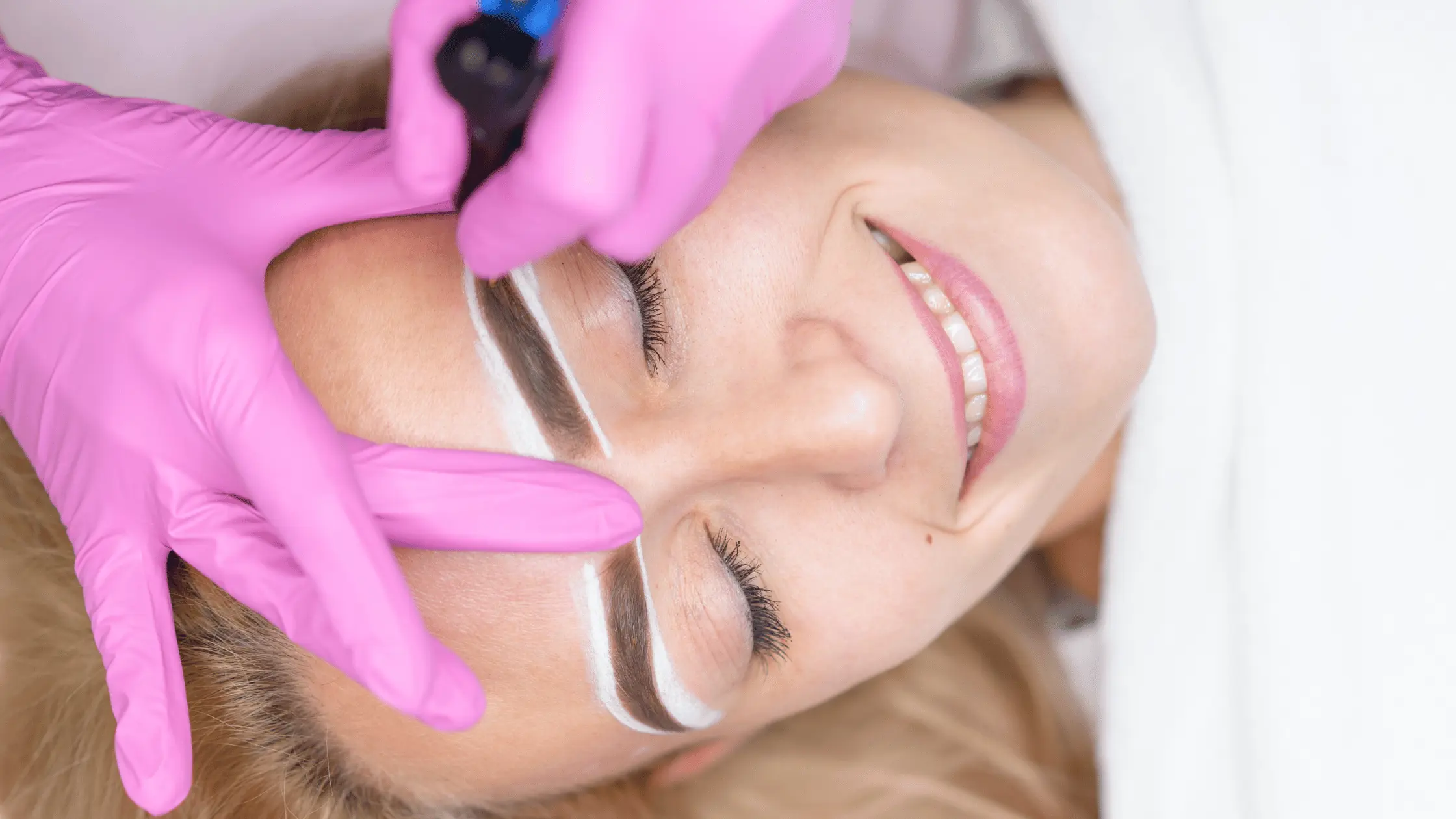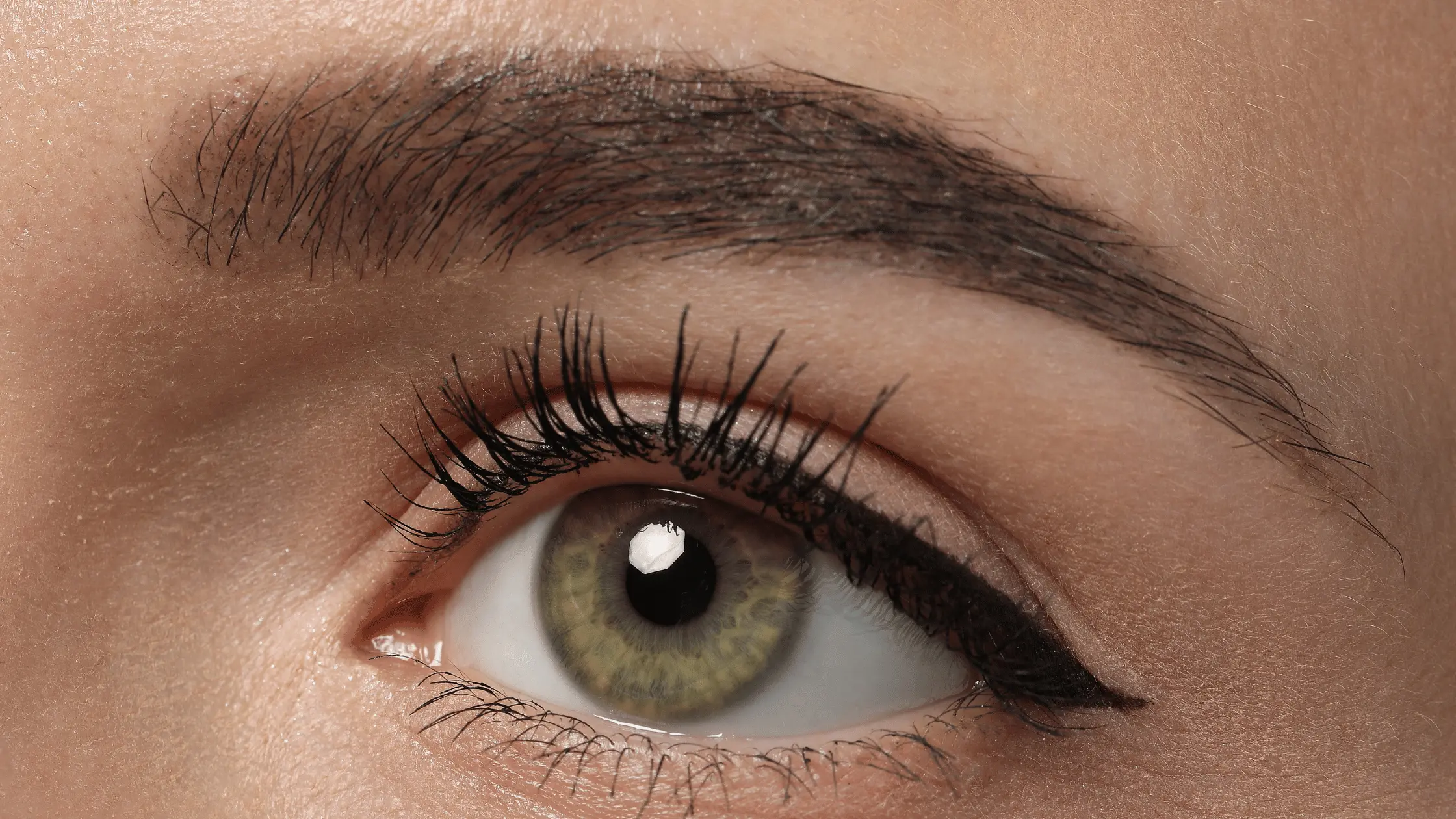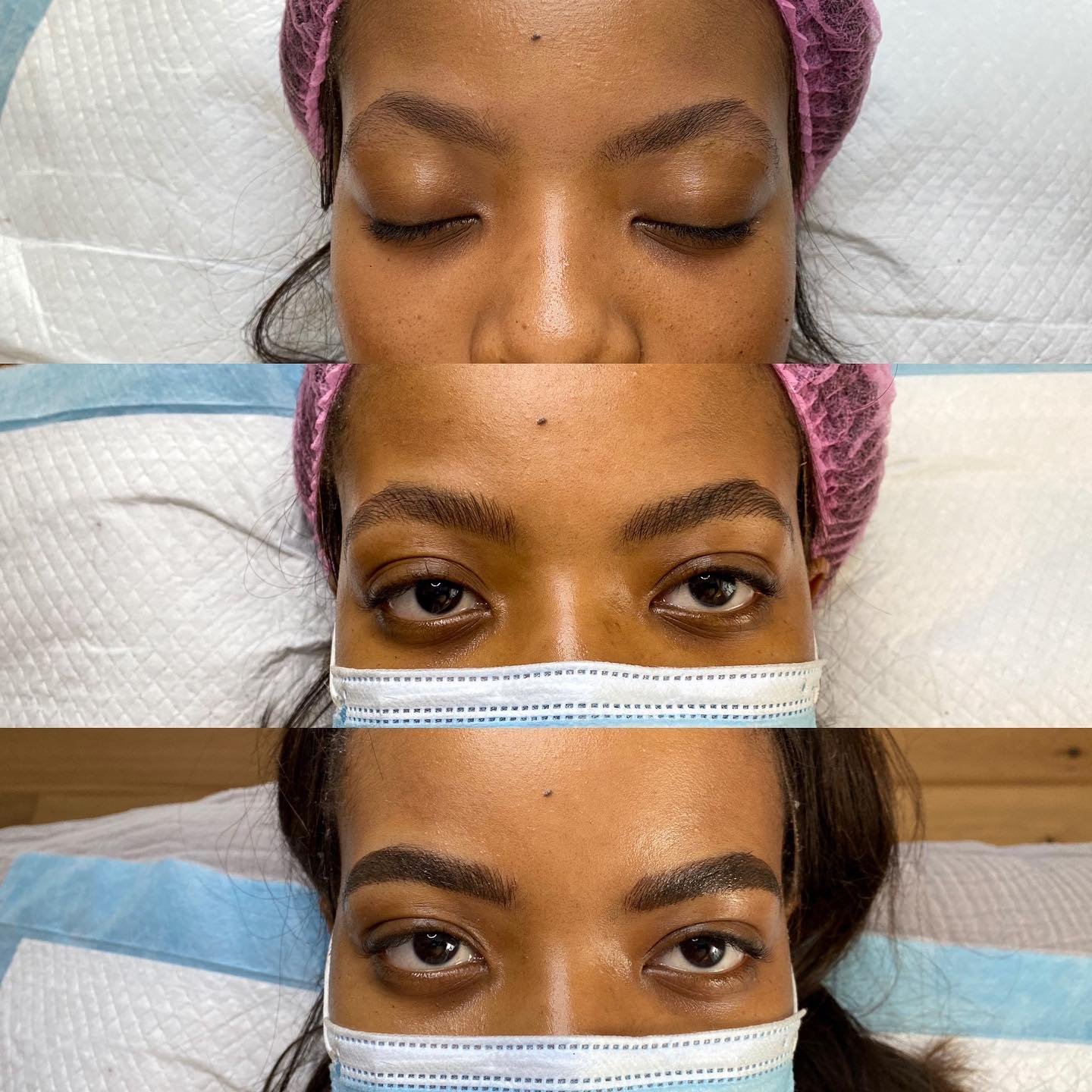At first, it was microblading, a cosmetic tattoo that produces brows that look like real hair strokes. Then, other procedures came to the scene, surpassing the well-known microblading in popularity and acceptance.

Some clients might need help knowing which of the permanent makeup procedures is best for them because they are still getting familiar with all the available treatments.
You might have come across the term “ombre brows,” and you may also be familiar with the term “ombre microblading.” Well, let’s clear the air on this misunderstanding and also give a detailed explanation of what ombre microblading is and all it entails.
What is Microblading?

Microblading is what you need if you want brows with hair strokes or nano blading, which is the same process but is done mechanically.
When performing microblading, a hand-held tool is used; the tool is first dipped into a pigment mixture to make incisions, and once healed, they look like natural hair strokes.
For those who already have brows but are uneven or poorly shaped, microblading is ideal. You may give your brows fantastic arches and a fuller appearance by adding hair strokes where appropriate.
Ombre Brows

Ombre brows are a variation of powder brows, and no denying they are very soft and powdery but still have the same hair strokes. The procedure is carried out using a tool that inserts PMU pigments into the epidermis using a dotting technique known as pixelization.
Ombre brows are powder brows with lighter heads and darker tails ( the ombre effect). A well-known procedure in the beauty industry.
What is Ombre Microblading?
Two procedures are combined in ombre microblading. The hair strokes are first created with microblading, after which shading is added, with lighter tones at the brow’s head and darker tones at the brow’s tail.
However, some artists prefer to do the shading first and then add hair strokes. Since ombre microblading combines two procedures or treatments, it is also known as “Combre brows.”
The ombre brow shading gives your brows a dazzling makeup appearance, while the microblading creates hair strokes that appear as though you naturally have more brow hairs.
What Is The Difference Between Combre Brows and Combo Brow?

Image by M I C R O B L a D I N G
Permanent Makeup artists use the terms combre and combo brows interchangeably, though the treatments are quite similar. Combre brows is another name for ombre microblading, as explained earlier.
The combo brows, however, combine powder brows with microblading without the ombre effect; therefore, we call these powder brows microblading. Combo brows might also combine microblading and shading. That’s the only difference between these two procedures.
Aside from that, both treatments are almost identical, and you will have to decide based on your preferences.
What You Need To Know About Ombre Microblading
Here are some Ombre microblading facts you must know to help your decision.
Longevity
While the effects of microblading typically last up to 18 months, adding shade will extend its longevity; expect your ombre microblading to last for two years.
Remember that it won’t appear the same after so much time, so you’ll need to freshen it up when you discover it has faded so much.
The rate at which it fades is determined by various factors, which include lifestyle and skin type. Ombre microblading fades if you have oily skin and also by swimming, sweating, and much exposure to the sun.
Some people will find their ombre microblading entirely vanishes after around two years (or so) if not touched up, while others will still have pigment remnants. After two years, for some, it will still appear fine.
Although ombre microblading is a semi-permanent treatment, the shadow will typically last for years on most people, much like any other contemporary eyebrow tattoo.
The Healing Process
Ombre microblading requires up to 6 weeks to heal, just like any other brow tattoo. Your eyebrows will go through a few stages during the healing process when they are first overly dark, then scabby, and then too light.
All of that is normal; ensure you follow all the recommended aftercare measures for the best possible healing outcomes.
Ombre Blading Aftercare
How Long Does It Last?
Your microblading artist must familiarise you with the aftercare procedure during your treatment.
The procedure’s effectiveness greatly depends on proper microblading aftercare, so you must take it carefully and adhere to the specific instructions.
Cleaning your brows, shielding them from contamination, taking care of the affected part of the skin as directed by your microblading artist, and following a schedule for regular checkups are all part of the aftercare process.
How Long Does The Aftercare Last?
Generally, aftercare for microblading typically lasts for about seven to fourteen days.
The aftercare takes less time than the healing phase for ombre microblading, which takes 4-6 weeks.
The most important part is the start of the ombre microblading recovery process, when you must be very cautious. Scabbing is the most delicate stage, and you can relax a bit after that stage.
Types Of Ombre Microblading Aftercare
There are two types of ombre microblading aftercare:
- Wet healing
- Dry healing
The difference is that; the first requires applying an ointment after cleaning the brows, while the second does not.
The wet healing process comprises the following steps:
- Gently clean your brows with sterile water.
- Apply a small layer of aftercare ointment.
- Gently dry them with a clean cloth or cotton pad.
Most microblading artists advise their clients to go through this aftercare process, noting that an ointment is a barrier against contamination, benefits the skin cells, and promotes faster skin regeneration.
Dry healing is in two types;
The first involves that you clean your brows gently, then drying them—without applying ointment.
The second is a bit harsh and calls for no washing or ointments.
All you have to do is avoid water and let your brows recover independently. Washing your brows might cause difficulties. This approach needs to be updated; most microblading professionals no longer advocate for it.
A skilled artist should be able to identify the approach that will perfectly suit the client’s skin type. You should also adhere strictly to every instruction given.
Simple Rules For Ombre Microblading Aftercare
- Wash your face daily and, be careful about it, pay attention to the affected area that has been treated. Pat it with fresh tissue, and avoid rubbing your brows.
- Use only the recommended products of your microblading artist. Use skincare products with caution because they could contain substances like acids and exfoliants that could alter the color.
- Allow the scabs to fall off naturally. Avoid picking them; you might rip off some color, which is challenging to repair.
- Use a clean pillowcase, preferably silk, and avoid sleeping on your face.
- For at least ten days, avoid wearing makeup. Artists advise against it because the makeup and removal products can come in contact with the affected area when you remove the makeup.
You might be tempted to wear makeup on the rest of your face to avoid the treated area.
- Avoid taking long showers, saunas, ocean and pool swimming, and sweating.
- Avoid tanning and exposure to the sun.
Is Ombre Microblading Good For Me?
Ombre microblading looks attractive and is a great choice for those who like the makeup look on their brows. Additionally, it’s great for people with oily skin who like hair-stroke brows, but they need to be better candidates for ombre microblading.
Adding the powdery effect to the brows will make them look good and last longer.
Removal
Ombre microblading can be removed if the client is dissatisfied with the outcomes or if, after a few years, the pigment residues are still visible and appear unpleasant (this usually occurs if the artist’s technique is poor, i.e., if the pigments were applied too deeply). Laser, saline, and glycolic acid removal are the best and most efficient alternatives.
What To Do When Ombre Microblading Starts Fading?
Even if you followed all the aftercare instructions, the artist could be at fault if your microblading fades too quickly.
When the incision is shallow, the skin won’t retain the pigment. You should request a refund, look for another artist, or schedule a second appointment.
You must inform your artist if you have any medical conditions to get better results and to be secure and healthy. You should disclose this to your artist so they can assess your suitability for ombre microblading and determine the type of pigment to use. For example, the artist shouldn’t use iron-based pigments if you are anemic and won’t like the outcome.
Your eyebrows may fade more quickly if you have oily skin. Hence, regular touch-ups are required.
Conclusion
Ombre microblading is ideal for anyone who does makeup frequently and loves the look it gives, most people consider it dramatic, but the look is glamorous. Additionally, clients with oily skin may go for it if they prefer the hair-stroke look.
